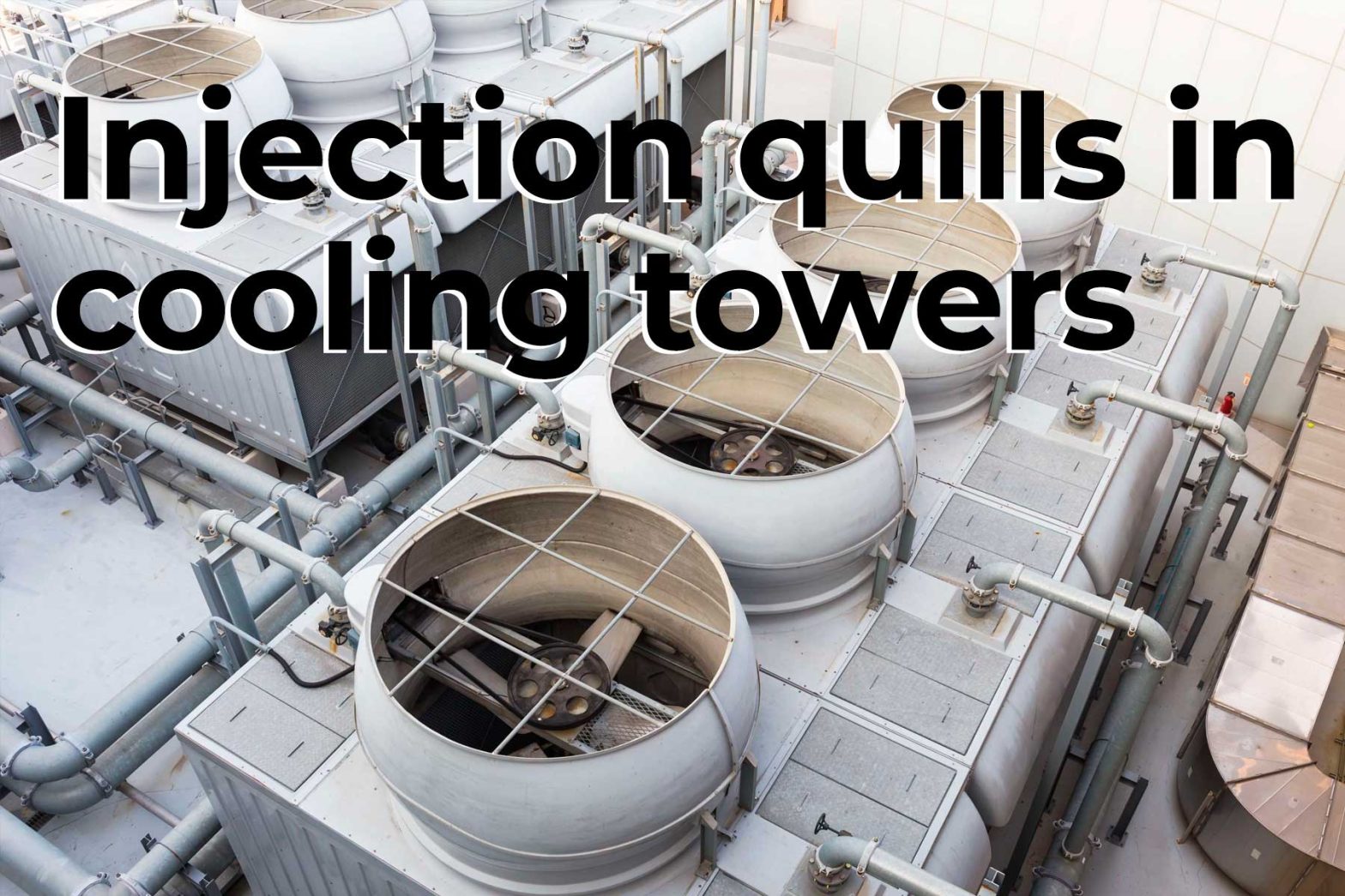There are several challenges in using injection quills in cooling towers:
- Clogging: The nozzles of the quills can become clogged with debris or minerals, reducing the flow rate of the chemical solution and making it difficult to achieve accurate dosing.
- Maintenance: Injection quills require regular maintenance and cleaning to ensure that they are functioning properly.
- Chemical compatibility: The quills and the chemical solution must be compatible to prevent corrosion or other damage to the quills.
- Proper installation: The quills must be properly installed and configured to ensure that the chemical solution is evenly distributed throughout the water in the tower.
- Monitoring: The quills and the chemical solution must be regularly monitored to ensure that the correct amount of chemical is being added to the water and to detect potential issues.
- Safety: Some chemicals used in the cooling tower can be harmful to human and the environment, so handling and disposal of these chemicals must be done with care.
- Cost: The use of injection quills can add to the overall cost of operating a cooling tower, due to the cost of the quills, the chemicals, and the maintenance required.
Issues of compliance with regulations while using injection quills with cooling towers
Using injection quills in cooling towers may raise some issues of compliance with regulations, such as:
- Chemical disposal: The disposal of the chemicals used in the cooling tower, such as biocides and corrosion inhibitors, may be regulated by local and federal laws. Improper disposal can lead to fines and penalties.
- Water discharge: The discharge of water from the cooling tower may be regulated by local and federal laws. The water may contain chemicals and microorganisms, and the discharge may need to meet certain standards to protect the environment and human health.
- Air emissions: The discharge of air from the cooling tower may be regulated by local and federal laws. The discharge may contain chemicals and microorganisms, and the emissions may need to meet certain standards to protect the environment and human health.
- Occupational health and safety: The use of chemicals in the cooling tower may be regulated by OSHA and other occupational health and safety laws. The chemicals may be harmful to workers, and the regulations may require certain safety measures, such as protective gear, training, and hazard communication.
- Record-keeping: The use of chemicals in the cooling tower may be regulated by local and federal laws. The regulations may require record-keeping of the chemical usage and disposal, as well as regular testing of the water and air emissions.
In summary, the challenges of using injection quills in cooling towers include potential clogging, regular maintenance, chemical compatibility, proper installation, monitoring, safety, and cost.
Crystal Industrial Syndicate from India, makes a range of custom injection quills for a variety of industrial processes. Our injection quills are manufactured in India and comply with the world’s most stringent certifications. Our products are installed around the world, from North America and Europe to Africa and the Middle East. Contact us to know more about how we can support your injection quills requirements. Contact us
Copyright © 2023 by Crystal Industrial Syndicate Pvt Ltd. All rights reserved. www.crystalindustrial.in
